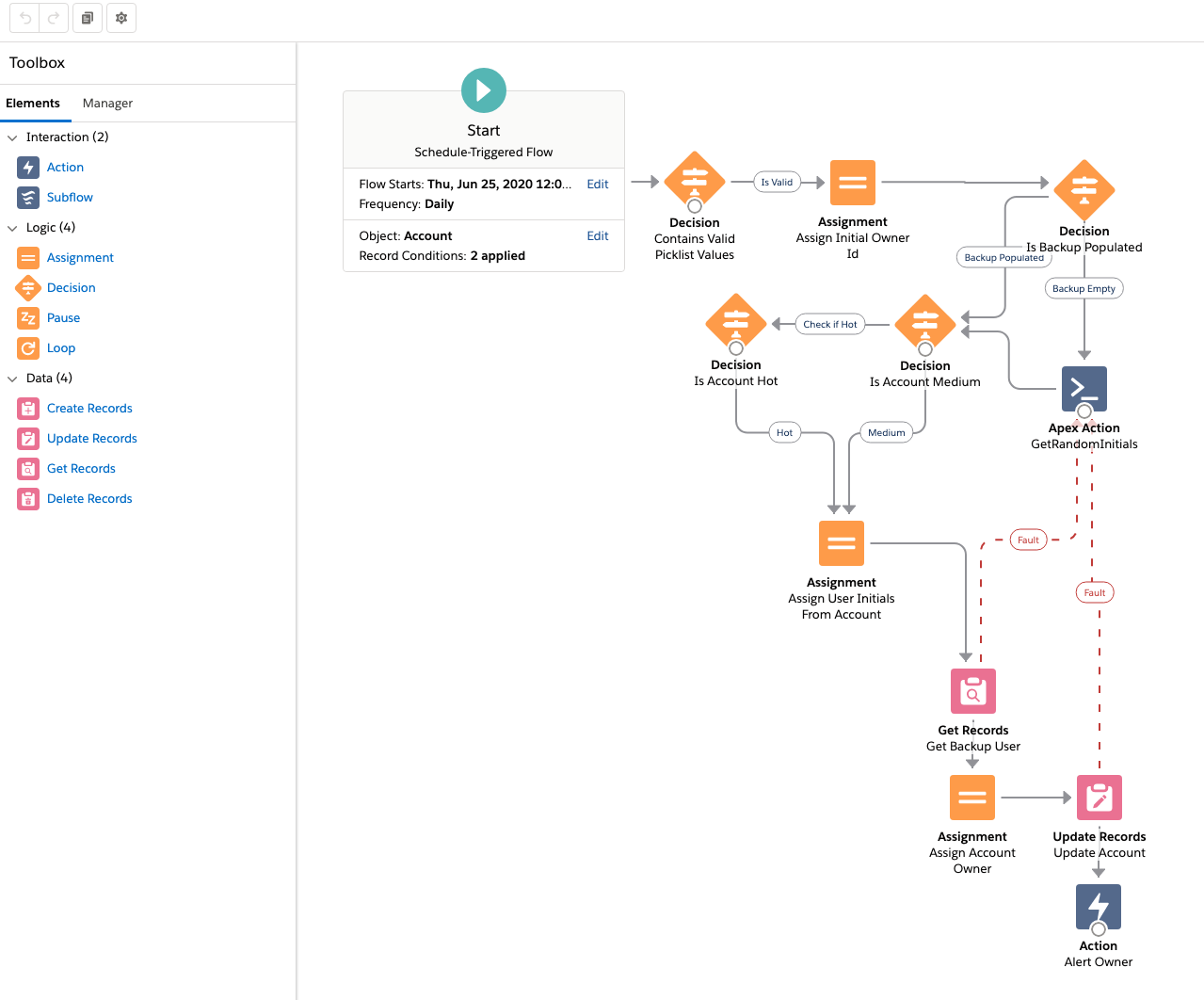As we all know, Salesforce Flows is one of the hot topics in the industry and every Admin or Developer needs to get hold of it. There is no doubt in the fact that you can understand after a little bit of learning and practice. However, it is better that you start with basic topics and progress to advanced topics. To help you with it, we bring 5 Fundamental Skills that will give you an edge while learning Salesforce Flows.
We recommend going through the entire blog and learning these topics. If you find any difficulty with the same, kindly enroll in our course given at the end of the page.
Table of Contents
ToggleSkill #1 Standard Objects
The first thing you need to learn about is the type of Standard Objects available in the Salesforce ecosystem. Make sure to get used to these objects and what fields are present in them. You will learn more about them as you keep using them in regular operations.
Some prominent Standard objects that you will regularly encounter are,
- Opportunity
- Case
- Lead
- Contact
- Account
Don’t forget to get yourself familiar with knowledge of various field types involved with the objects.
Skill #2 Process
Process is a chain of events that a run in the organization to execute tasks and get results desirable by the business. You should be capable to complete the process and creating adequate documentation for the same. This will help your company to achieve targets in the minimum time possible.
Moreover, you can learn about process execution as you gain experience. If you are a beginner, try looking for process mapping and how it is done in Salesforce. This will give you an overview of the working standards of the industry.
Skill #3 Variables & Collections
As the name suggests, Variables act as memory containers that store temporary values in your Flows. Users can store different types of values depending on the type of variables used in the system. We also have Record Variables that can hold every value associated with a specific record.
On the other hand, you can collect multiple values in a single container using Collections in Salesforce Flows. Collections can easily contain values of similar types for better accessibility. Hence, users might need to revisit a variable to access every value that is a crucial part of any project.
#4 Loops
We talked about revisiting containers to access every value in the previous section. Well, Loops help you to do this according to your requirement. When you include a loop in your flow, you can process elements with every iteration of the loop. Users can choose any value for which they want the loop to run in the system.
You must learn about loops as a miss-calculated amount of iterations could entirely change the outcome of the code. Also, you will require more time to revert back the changes made due to this mistake.
#5 Testing & Fault Handling
In the end, you create the entire flow using variables, loops, records, and whatnot. But is your system error-free or tested to get the expected outcome? If not, you could be in big trouble, especially if it contains complex operations.
Initial Testing is quite important as it helps you discover bugs and errors making the system faulty. The Debug Mode is useful to roll-back recent changes made in the flow without disturbing the data. Try to figure out the error message and look for the position where the default is arising.
Once you find the issue, you must have resources and knowledge of Fault Handling. The best way is to create a “Decision” element for every possible outcome of the system. It can be an effective way to avoid errors in the later stages of development.
If you want to learn more about it, enroll for our special Salesforce Platform App Builder Certification course just for you! We have a special discount exclusive for our readers.








